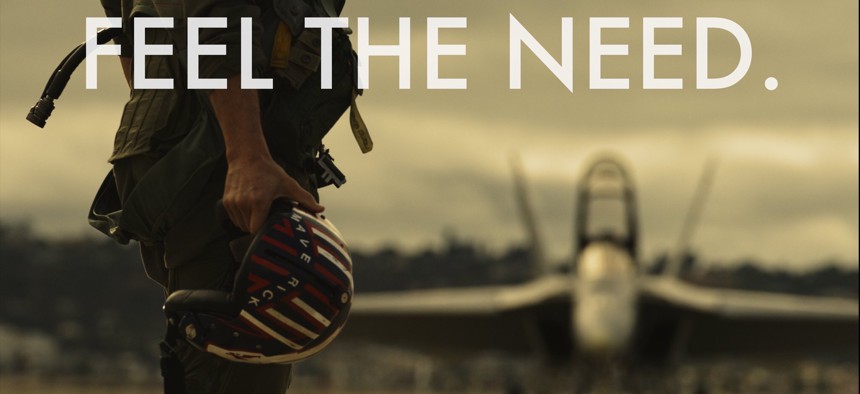Boeing’s F/A-18 Outshines Lockheed’s Flashy Hypersonic Jet in ‘Top Gun: Maverick’
But can the Super Hornet’s star turn keep the production line open?
Wreathed in catapult steam and 1980s guitar riffs, the opening montage of "Top Gun: Maverick" puts the star front and center—no, not Tom Cruise, Jon Hamm, or Jennifer Connelly, but a jet that, like Capt. Pete "Maverick" Mitchell, hasn’t been the new hotness for at least a decade. Yep, the Boeing F/A-18 Super Hornet stole the show.
The long-delayed sequel to 1986’s “Top Gun” is an ode to a generation of aerial warfare that many military leaders have told us is a thing of the past. As generals lecture that stealth is a must and computers can think faster than humans, men and women flying a 20th-century jet take on technologically advanced machines.
Yes, this is a fictional movie. Yes, there are plenty of technical errors. And in real life, the U.S. Navy is trying to send the Super Hornet off into the sunset. For two consecutive years, the Navy has omitted purchases of the jet from its budget proposals—only to see Congress scoff and insist on them. This year, for example, lawmakers forced the service to buy a dozen Super Hornets, and current orders will keep the production line in St. Louis running through 2025.
But three high-profile losses in international fighter competitions suggest the end may be coming. That’s putting suppliers, factory workers, and Missouri’s congressional delegation on edge. Still, India and Germany remain possible future customers—though Berlin announced in February that it would dip a toe into F-35 ownership.
“Top Gun: Maverick” may be fiction, but it may also provide the Super Hornet with a real marketing boost. In the movie, F/A-18s fly a fast, nap-of-the-earth mission through picturesque mountains to evade enemy surface-to-air missiles. It’s a job seemingly tailor-made for the F-35, but that 5th-gen jet lacks a mission-critical feature: a two-seat cockpit that can make actors look like they have the stick.
These two-seat F/A-18Fs, rented out by a U.S. Navy hoping for a repeat of the original movie’s recruiting boom, allowed filmmakers to up the sequel’s realism. There were no G-forces on the faces of Tom Cruise and Val Kilmer in 1986. This time around, there were plenty of smooshed faces as the actors strained to keep their blood flowing.
The F-35 gets a brief cameo on the flight deck of the USS Abraham Lincoln (a virtual reshoot of the original movie’s opening scene, right down to Kenny Loggins’ “Danger Zone” playing in the background). But it’s a made-up aircraft that gets Lockheed Martin some prime product placement. Early in the movie, Maverick takes a “Darkstar” hypersonic aircraft aloft for some turning-and-burning, right after flashing the Skunk Works trademark on its vertical tail and the company logo on the throttle.
But the F/A-18 gets the bulk of the screen time. Interestingly enough, the F-14 Tomcat, the star of the original “Top Gun,” found itself in a similar position when the movie debuted in 1986. Production of the Grumman-made jet ended five short years later in 1991. That, combined with the company’s merger with Northrop in 1994, eliminated the jobs of tens of thousands of workers at its Long Island, New York, factories. Boeing’s St. Louis workers are hoping they have more than three years left building Super Hornets.
Don't miss:





